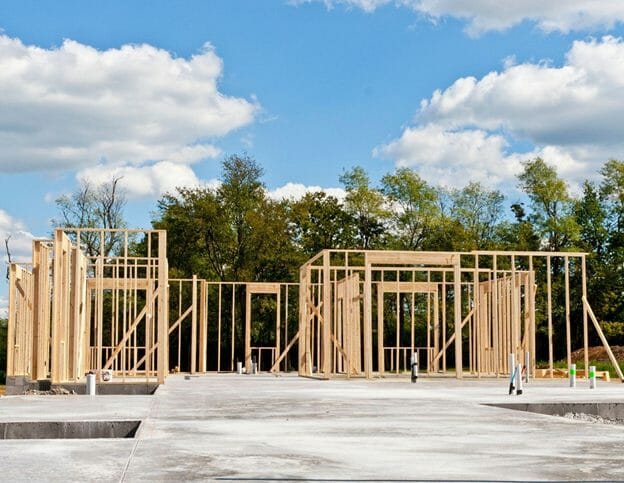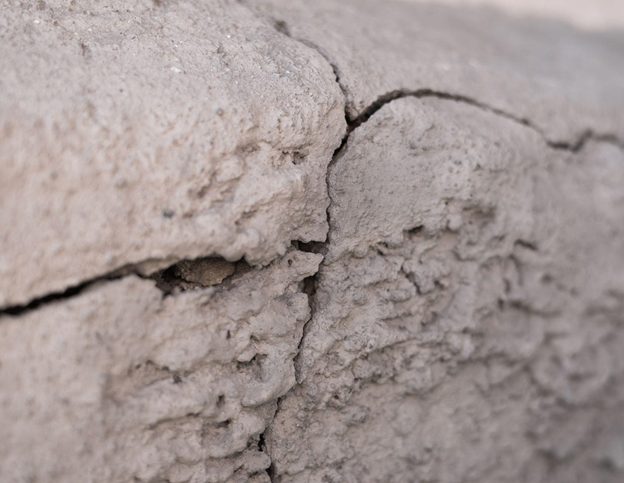When you’re buying an investment property in California, maximizing profits usually means making sure the home is structurally sound. Unfortunately, many people don’t understand home foundations, how they get damaged, and what different issues look like. Without this knowledge, you open yourself up to properties that aren’t worth the investment in the first place and just lead to headaches.
Below, we’ll explain the different types of foundations common in California and issues you might notice on each that indicate damage. We’lll also offer some insight into the average repair cost of foundation repair in California to help you determine if the investment is worth it.
Types of Foundation in California
Knowing the styles of foundations will help you understand the damages to which each is prone. Below are the most common foundation types in California.
Slab Foundation
Foundations are by far the most popular style in California. This is primarily because the frost line is so shallow throughout the state, so there is no need to excavate the soil to run utility lines deep beneath the house.
A slab foundation consists of a single concrete slab poured directly on the soil. They don’t allow for any under-home area, so the lowest part of your home will be the first floor.
Pier and Beam Foundation
A pier and beam foundation consists of piers or piles driven into the ground on which the supporting beams of your home sit. With this style, you will likely have a small open crawl space beneath the house for storage or utilities.
Crawlspace Foundation
Crawl space foundations also offer an under-home area. The primary difference between this and a pier and beam foundation is that crawlspaces usually include a concrete stem wall that encloses the space.
Basement Foundation
Basement foundations are the most uncommon throughout California. They are the most expensive to install because they require excessive excavation, and without the need to get utility lines below the frost line, most builders forego this style.
However, “California basements” are common in California, as are walk-out basements. California basements are typically very small areas located underground, strictly for utilities. Walk-out basements are only possible in the hilly regions of California, where homes are built into slopes, and one side of the basement is entirely above ground.
Common Foundation Issues & Repair Costs in California
Unfortunately, homes in California are prone to foundation damage. As an investor, you should always be on the lookout for the below problems, which are prevalent throughout the state.
Foundation Cracks
Foundation cracks are, by far, the most prevalent foundation problem throughout California. There are several different types of foundation cracks you should be on the lookout for.
Settling Cracks
Settling cracks appear on nearly every foundation across the country. They develop as the concrete settles beneath the weight of your home after construction. Settling cracks are almost always less than ⅛” wide, and both sides of the gap are level. They typically aren’t indicative of structural issues.
Fixing settling cracks usually just consists of sealing them to prevent water intrusion. The average cost for this process in California is around $300 per crack. Generally speaking, settling cracks will likely not dissuade you from buying an investment property.
Wide or Uneven Slab Cracks
If you notice cracks on the surface or side of your slab widening beyond ⅛” or becoming unlevel from one side to the other, chances are the issue is more serious. This is a common occurrence in California because of the high concentration of clay in the soil, which is expensive and may lead to uneven support for your foundation.
Fixing these types of gaps usually requires structural stabilization, which is much more expensive than simply sealing settling cracks. You will more likely need supportive piers placed beneath your foundation, which cost between $1,000 and $3,000 each in California. Most homeowners pay between $5,000 and $15,000 for this service.
If your profit margins on an investment property are relatively small, this cost could mean purchasing the house isn’t worth it. If the issue persists for long enough, you may have structural damage in the home above the foundation, which will cost even more to repair.
Horizontal Cracks
If you have a basement or crawlspace in California, you may notice horizontally oriented cracks on the concrete walls. These are among the most severe in California and usually require immediate repair. They can occur if the higher rainfall in California’s winter months soaks into the absorbent clay soil, causing it to expand against the concrete.
Earth anchors are the most common repair for horizontal cracks in California. These cost around $2,000 each, and most homeowners in the area pay a total of between $10,000 and $15,000.
This type of damage might indicate that an investment isn’t worth it monetarily, and the frustration and headaches you might experience during the repair might also mean you should search for another opportunity.
Earthquake Damage
Finally, California is prone to earthquakes, which can cause immense damage to homes throughout the state. New properties are often required to be retrofitted, but many of the older homes in the area haven’t been safeguarded against ground movement.
Earthquakes can lead to any of the damages above, potentially meaning you should find another investment property. However, you’ll also need to consider retrofitting your investment if it isn’t protected already. This process usually costs between $3,000 and $10,000 in California, so make sure to factor that and the repair time into your initial cost.
Wrapping Up: Is a California Investment Property With Foundation Damage Worth It?
Ultimately, you’ll have to answer this question for yourself. For some investors, a few thousand dollars or even a $20,000 expense after closing isn’t enough to deter them from the opportunity. However, you’ll always need to keep your profit margin and repair timeline in mind and weigh the benefits and downsides of purchasing an investment that needs immediate attention and an additional investment.






